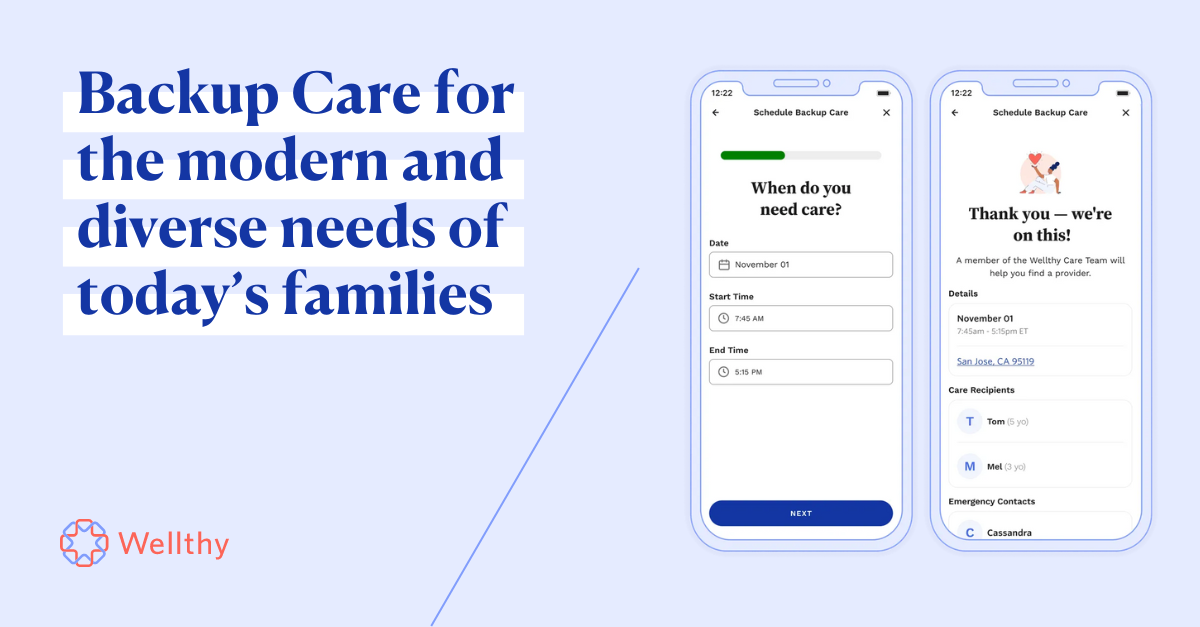In just the first few months of 2024, we’ve seen three monumental studies that look at the impact of care benefits on the workforce, and all three have a resounding clear, concrete, and overwhelming conclusion: the return on investment for employers when it comes to offering care benefits is beyond just good, it’s overwhelming.
In January Harvard Business School released Healthy Outcomes, a two-year look at the way nearly 100 companies saw results from utilizing Wellthy as an employee benefit to support their teams. The findings: Wellthy saves the average company $200,000 when it helps just 5 employees avoid taking a leave of absence or leaving the workforce because of care needs. It adds up to companies seeing a 2 to 1 and up to a 3.6 to 1 ROI.
In February, a study conducted by Vivvi and The Fifth Trimester documented incredibly strong ROI when it comes to family-care benefits — with case studies showing that for every $1.00 spent on child care benefits, a company sees an 18x return.
And just this week, Boston Consulting Group and Moms First released a groundbreaking new report on the ROI of child care benefits, looking at five companies — Synchrony, Etsy, UPS, Steamboat Ski Resort, and Fast Retailing — and found that child care benefits offered a return on investment of up to 425%.
“Offering care benefits isn’t just good business,” Reshma Saujani, founder and CEO of Moms First, said at a Washington, DC event announcing the report, “it’s financial negligence for a company not to.”The report from Boston Consulting Group and Moms First, “The Employee Benefit That Pays for Itself,” found that by providing childcare stipends, backup care options, and onsite childcare, all five of the companies studied avoided substantial costs from employee turnover and unplanned absences. Parents with reliable childcare reported missing up to 13 fewer work days per year.
Both the Harvard Business School study on Wellthy and the BCG/Moms First study also showed that care benefits more than pay for themselves. For the Harvard study, research showed that Wellthy helps an employer reduce turnover by at least 5-6%, with the benefit paying for itself once an employer sees a 1-1.7% reduction in turnover. For BCG/Mom’s First, researchers found that when child care benefits help retain as few as 1% of eligible employees, it covers the cost of providing benefits for all of those who are eligible within a company.
All three studies come at a critical moment for conversations around care benefits in the workforce. Data from Arizent and Employee Benefits News shows that 69% of employees say that better caregiving benefits would be a primary or contributing factor for accepting a new role with a company, and that “at every stage of caregiving, employees crave more support from their employer.”
Despite this, only up to 12% of U.S. workers currently have access to employer-provided childcare benefits, dropping to a mere 6% for lower income and part-time workers. These new reports underscore a compelling business case that has the potential to dramatically alter the way employers think about supporting their employees with care benefits.
“Our study provides evidence that U.S. employers adding childcare benefits to their employment packages are seeing quick and lasting rewards in recruiting, retention, and productivity. This result was consistent across a range of industries, and for both salaried and hourly employees,” said Emily Kos, managing director and partner at BCG. “One striking example of how the benefits pay for themselves is tied to something as basic as showing up. Parents miss far less work when they have reliable care and more options to manage childcare disruptions. That’s good for employees and for employers.”Just several months into 2024, it's clear that the employees and employers alike are seeing unprecedented and consequential returns from care benefits. The financial and productivity gains, coupled with the positive effects on employee retention and recruitment, make a compelling case for companies to prioritize care benefits as an essential part of their employee support strategy.
And as the workforce continues to evolve and the demand for comprehensive care support grows, it is becoming increasingly clear that investing in care benefits is not just a socially responsible choice, but a financially prudent one that can drive long-term success for both employees and employers alike.







